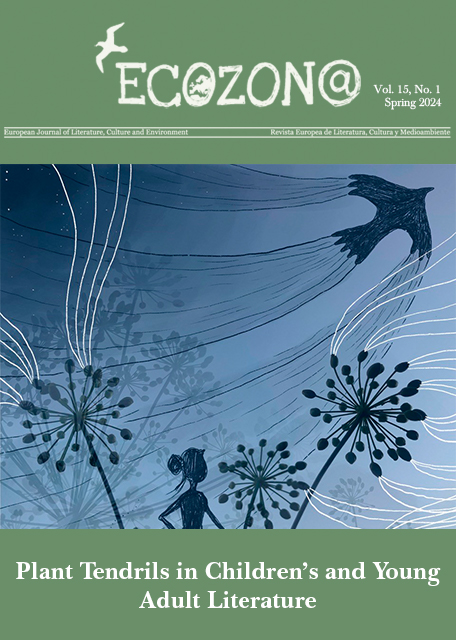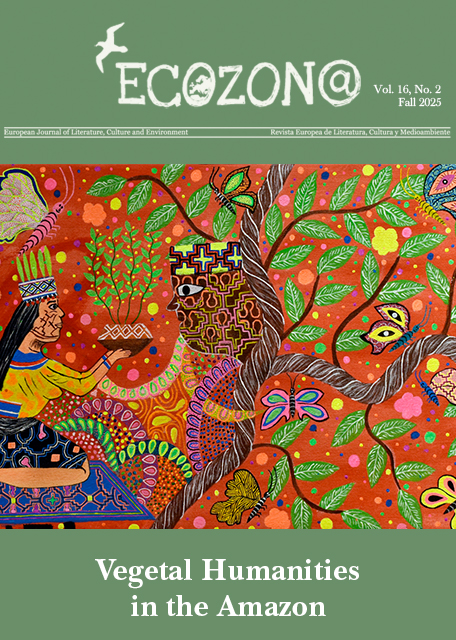Unlikely Friends in Patriarchal Lands: An Ecofeminist Reading of Rajasthani Folktale “Sonal Bai”
DOI:
https://doi.org/10.37536/ECOZONA.2024.15.1.5231Keywords:
Chronotope, Folktale, EcofeministAbstract
"Sonal Bai" is a popular folktale about a girl told by women in Rajasthani-speaking areas of north India to initiate young girls into adulthood. This paper investigates the metaphorical representation of a girl’s coming of age through her relationship with a Sandalwood tree analysing, "Sonal Bai" as an ecofeminist text. The story renders voice to socially prohibited themes of menstruation and women’s sensual desire as embodied in silent friendship between a sandalwood tree and Sonal (girl with golden hair). The paper highlights how the outwardly simple tale of “Sonal Bai” is in fact an encoded lesson for teenage girls, inverted as a relationship between two highly treasured “belongings”/ “commodities”—sandalwood and a unmarried girl—in a patriarchal society economically dependent on agriculture. The sandalwood tree is highly valuable for farmers; different parts of the tree are used to produce furniture, oil, fragrance and food items. It is also a part of religious rituals where its essence is used as tilak on idols in Hindu traditions. Rajasthani Language is spoken prominently in the desert regions of India (Thar Desert) and the existence of such a tree in a desert is as precious and rare as a girl with golden hair. The paper draws reference from recurrent invocation of olfactory senses of the listeners captured by the images of the sandalwood tree in the story. It also explores use of growth metaphors using ‘rhizome’ like imagery of sandalwood branches reaching the sky which become an escape route for a teenage girl hiding from her family. The temporal and spatial indicators are infused together in the story of Sonal Bai leading to an unlikely friendship between two prized possessions that eventually breaks with the arrival of a patriarchal archetype: a handsome young prince. This study discusses the prevalent katha culture in India where women exercise freedom of voice through singing and narrating tales within all-female groups. This site of independent feminine interaction in a highly patriarchal society is investigated using Bakhtin’s “Chronotope” to highlight culturally encoded lessons in folktales meant for young girls in Indian society as a means of informal education.
Downloads
Downloads
Published
Issue
Section
License
Authors who publish with this journal agree to the following terms:
a) Authors retain copyright and grant the journal right of first publication with the work simultaneously licensed under a Creative Commons Attribution License that allows others to share the work with an acknowledgement of the work's authorship and initial publication in this journal (CC BY-NC for articles and CC BY-NC-ND for creative work, unless author requests otherwise.
b) Authors are able to enter into separate, additional contractual arrangements for the non-exclusive distribution of the journal's published version of the work (e.g., post it to an institutional repository or publish it in a book), with an acknowledgement of its initial publication in this journal.
c) Authors are permitted and encouraged to post their work online (e.g., in institutional repositories or on their website) prior to and during the submission process, as it can lead to productive exchanges, as well as earlier and greater citation of published work (See The Effect of Open Access).










